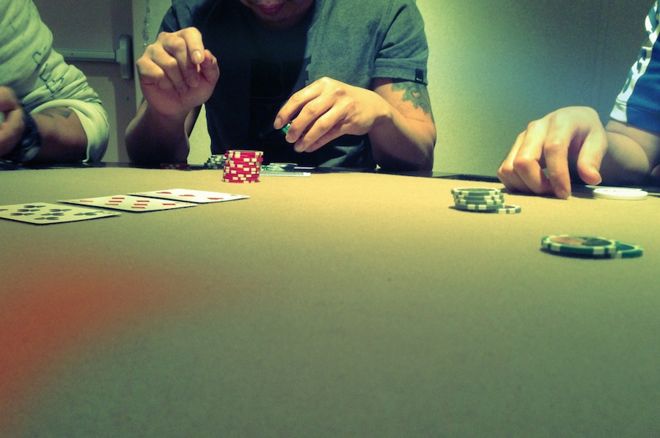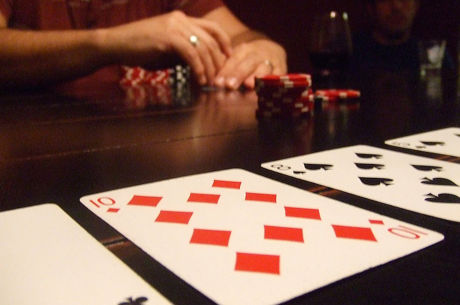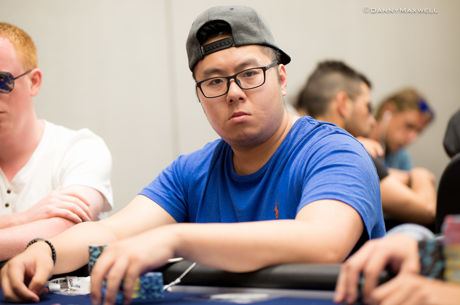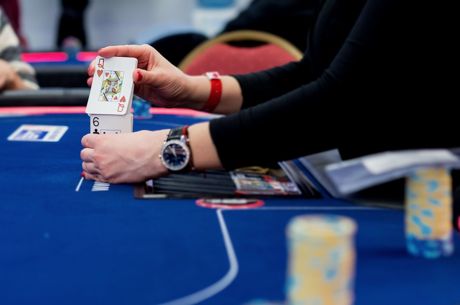Three Simple Tactics You Can Use (Against Relatively Simple Players)

You've probably already learned how to use some standard no-limit hold'em plays like the bluff, semi-bluff, stop-and-go, and float to your advantage. Here are a few additional tactics you can add to your arsenal to make money from less sophisticated opponents.
The highly-skilled poker player probably won't be fooled into an error by these moves, but in games populated by those with less experience, these should serve you well.
1. The Goad
Most players these days know enough to recognize that feigned weakness means strength and feigned strength means weakness. Here is an extremely simple (and some would say silly) play designed to turn the tables on these mediocre muckers.
Imagine you're playing a $1/$2 no-limit game at a friend's house or in a nearby casino. Your opponents are generally regular players, but they're not particularly skilled or professionals.
You're in early position and are dealt J♣J♦. You raise to $10 and get two callers in late position. The flop is good for you, coming 10♣6♦4♥. You bet $25 and get one caller. The turn is the J♠, giving you a set — your lucky day! How do you proceed?
Conventional play would be for you to bet a modest amount, hoping to get your opponent to call along, or even to slow play the set with a check and saving your bet for the river. But instead, you may induce a stack-size error by goading your opponent into calling a shove.
Stare aggressively at your opponent, grab your chips, and shove them forward, announcing loudly, "ALL IN!" Expect your opponent to look you up, figuring you to be making an obvious bluff. The idea is to trigger their lizard brain impulse to fight back against such obvious aggression while at the same time hitting them cerebrally by getting them to think "why is he betting so large if he doesn't want me to fold?"
Of course, this move doesn't work all the time. But even if your opponent correctly folds, you'll leave him uncertain — an advantage for your next encounter.
As I mentioned earlier, this move is unlikely to work against sophisticated opponents who will almost surely fail to take the bait. But against the many guys and gals who fancy themselves good but who aren't, they may well see your hyper-aggressive move as an attempt to steal the pot when you are weak (pretending to be strong).
2. The Isolating Over-Shove
Here's another, also aggressive play that's only a little more complicated.
Again, it's a $1/$2 game, and you have a relatively short-stacked player to your right who shoves his final $40 preflop. A few guys fold, and a couple remain after you. You have a medium stack for this game — a couple of hundred dollars — and have been dealt A♠9♥. You judge yourself to be ahead of this weakie's range, but of course, you're not sure where you stack up relative to the players who haven't yet acted.
Conventional play may caution just to call, or even to fold here figuring you might not even be ahead of the raiser (who is definitely in until the river), never mind those yet to act. But instead, make a significant raise here with your medium-strength hand. What you're hoping to do is force out all but the all-in player, isolating him.
You want to play this hand heads-up against the shover, since you gauge yourself to be ahead of his likely range. What you want to avoid is playing this hand multi-way, with the rest of your stack at risk against players who have position on you in later streets. Your raise is a means toward that end.
3. The Probe Trap
With this play, the idea, once again, is to convince your opponent through your betting action that your aggression means weakness rather than incredible strength. It works especially well if you've established yourself as a loose-aggressive player. Here's how you pull it off.
You were the preflop aggressor, as you often are in this game with relatively passive opponents. Your opponents checked to you, as they usually do in this game, and you hit a very strong hand on the flop. You continuation bet 60 percent of the pot, (again, as you usually do), and you got one caller (who might have thought that you can't always hit the flop).
The turn comes. If it isn't terribly scary, make a small probing bet — say just 20 or 30 percent of the pot. Do this instead of the more traditional, larger bet of 60-75 percent of the pot. Your only-slightly-sophisticated player may well be fooled by the weak probe bet into thinking that you are weak, just continuing again without too much risk and hoping he'll lay down his hand. He will then often raise light in this spot, trying to shove you out of the pot with his aggression.
You can respond by reraising, either taking down the pot by getting him to fold or getting more money if he calls. Either way, you have trapped him by betting small to induce him to come over the top for more money than he would have risked had you bet large on the turn.
Conclusion
A word of caution regarding these plays is in order. These plays are not "magic wands" guaranteed to extract profit 100 percent of the time, even against the ideal opponents. And they are unlikely to work against your truly clueless foes.
But against the typical line-up of home game players, or many low-stakes no-limit players in public card rooms, they should help you add some profit to your game.
Ashley Adams has been playing poker for 50 years and writing about it since 2000. He is the author of hundreds of articles and two books, Winning 7-Card Stud (Kensington 2003) and Winning No-Limit Hold'em (Lighthouse 2012). He is also the host of poker radio show House of Cards. See www.houseofcardsradio.com for broadcast times, stations, and podcasts.
Photo: "Poker Night," Burn Cerezo, CC BY 2.0.









